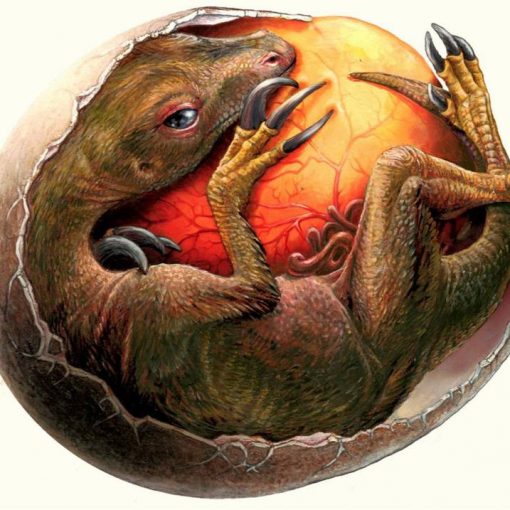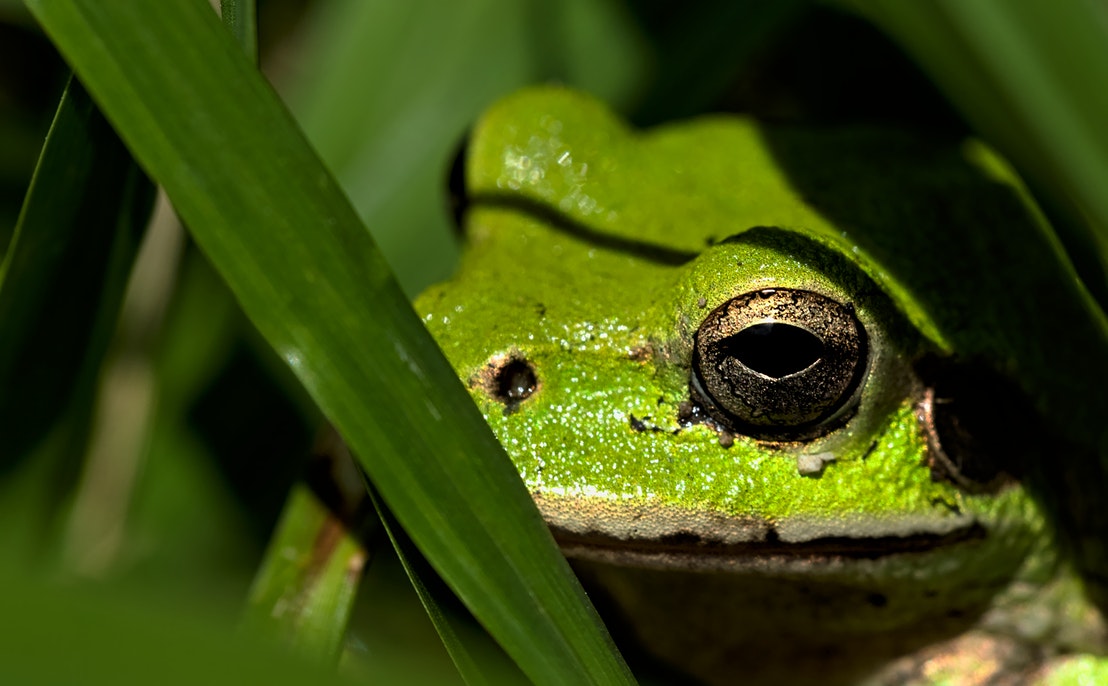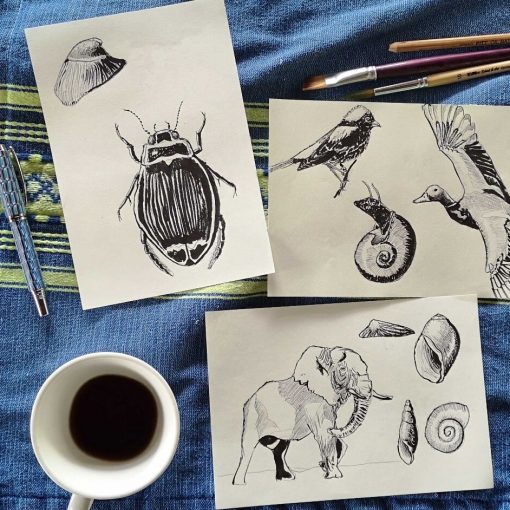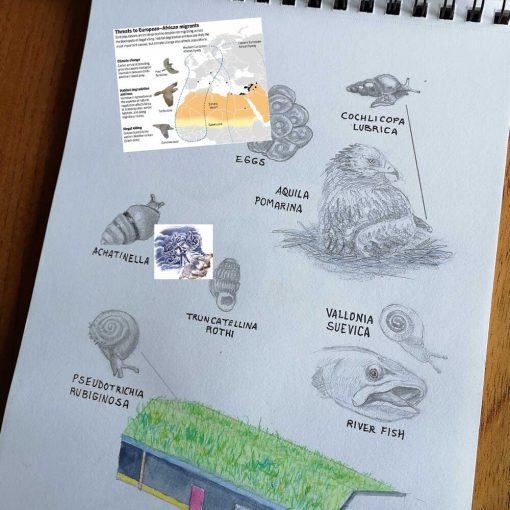Author: Julián Monge Nájera, Ecologist and Photographer
These mysterious worms hunt with an instantaneous net and many do not lay eggs, instead of giving birth to young that they feed through a placenta, just like mammals. They are known from fossils over 500 million years old and until recently, there was a heated debate about which animals were their closest relatives. But recent genetic analyses tell us who was right all along.
Velvet worms, or onychophorans, have interested evolutionary researchers since the 19th-century¹. Recent work by Laumer et al. (2019) ², while still far from conclusive, shows a tendency for three groups to appear close together in DNA analyses: onychophorans, arthropods, and tardigrades; and a bit less closely, nematodes and priapulids.
Let us take an imaginary look at how they came to be the animals that we know today, on the assumption that the work by Laumer et al. (2019) gives us a reliable view of their evolutionary history ².
By using, as the basis, the characters shared by the five groups, I think that their common ancestor lived in the ocean over 530 million years ago, in the early Cambrian. It probably was a very small worm, in the range of a few millimeters in length, with a cuticle that was molted when the animal grew and that could develop spines. The sensory organs —for chemicals, vision, and others— were concentrated on the front, forming ahead, and the brain was connected with the rest of the body by a ventral nerve cord. In both females and males, sexual and excretory organs opened in the rear (where the excretions did not interfere with the sensory organs). Digestion was done by a longitudinal tube aided by glands that connected to the front or mid of the digestive tract (Figure 1).

Figure 1. The evolutionary relationship of onychophorans, arthropods, tardigrades, nematodes, and priapulids according to Laumer et al. (2019) ². Sources: Priapulid, Nematode, Tardigrade, Velvet worm, Arthropod.
The first branch that evolved from this ancestor led to the priapulids, a small group of marine predatory worms that use their spiny prosome to feed and move in their burrows (we have early Cambrian fossils of Eximipriapulus globocaudatus, which was 1.4 cm long ³).
The second branching led to a far more successful group, the nematodes⁴, which practically have all kinds of diets and are found nearly everywhere, including the organs of other organisms (as parasites) and the deepest communities under the surface of the earth (Halicephalobus mephisto⁵).
Another branch of those early worms developed legs and gave origin to tardigrades, onychophorans, and arthropods. The branch that exploited miniaturization led to tardigrades, tiny aquatic animals that suck cell contents from plants or animals. They have eight stout, unjointed limbs, and their miniaturization makes specialized organs of circulation or respiration unnecessary; adaptation to their changing habitats resulted in spectacular resistance to extreme drying and low temperatures⁶.
The branch that exploited life in a larger body size led to onychophorans and arthropods, which over time would reach impressive sizes of 20 cm for onychophorans and 2.5 meters in arthropods (Jaekelopterus rhenaniae). Luckily, we have fossils that give us an idea of how they were. The early onychophorans were so small that they are barely visible to our naked eye; had bodies covered with sensory papillae, protective spines and plates; and probably were predators with a decent vision. They developed breathing tracheae and a dorsal heart to move the blood around. Originally, they had a few pairs of relatively long, unjointed legs, but when they moved to land, their bodies became longer and compensated this with a greater number of legs, still without joints and shorter, which allow them to move in a funny and unexpectedly efficient way⁷.
A group of their relatives went further in armoring and locomotion, developing over time the advanced exoskeletons and jointed legs of trilobites, shrimp, and insects⁸.
Today, over 530 million years later, the descendants of that early tiny worm fill the planet with a mind-boggling variety of shapes and behaviors, and will probably do so long after our species disappears.
*Edited by Katherine Bonilla y Carolina Seas.
Originally published in Blog Biología Tropical: 22 September 2020
REFERENCES
¹ Monge-Nájera, J. (2020). Onychophorology, the study of velvet worms, historical trends, landmarks, and researchers from 1826 to 2020 (a literature review). Uniciencia, 35(1), 210-230. DOI: 10.15359/ru.35-1.13
² Laumer, C. E., Fernández, R., Lemer, S., Combosch, D., Kocot, K. M., Riesgo, A., … & Giribet, G. (2019). Revisiting metazoan phylogeny with genomic sampling of all phyla. Proceedings of the Royal Society B, 286(1906), 20190831. DOI: 10.1098/rspb.2019.0831
³ Ma, X., Aldridge, R. J., Siveter, D. J., Siveter, D. J., Hou, X., & Edgecombe, G. D. (2014). A New Exceptionally Preserved Cambrian Priapulid From the Chengjiang Lagerstätte. New Chengjiang priapulid. Journal of Paleontology, 88(2), 371-384. DOI: 10.1666/13-082
⁴ Baliński, A., Sun, Y., & Dzik, J. (2013). Traces of marine nematodes from 470 million years old Early Ordovician rocks in China. Nematology, 15(5), 567-574. DOI: 10.1163/15685411-00002702
⁵ Borgonie, G., García-Moyano, A., Litthauer, D., Bert, W., Bester, A., van Heerden, E., Möller, C., Erasmus, M., & Onstott, T. C. (2011). Nematoda from the terrestrial deep subsurface of South Africa. Nature, 474(7349), 79–82. DOI: 10.1038/nature09974
⁶ Cooper, K. W. (1964). The first fossil tardigrade: Beorn leggi Cooper, from Cretaceous amber. Psyche, 71(2), 41-48. DOI: 10.1155/1964/48418
⁷ Monge-Nájera, J., & Hou, X. (2002). Disparity, decimation and the Cambrian» explosion»: comparison of early Cambrian and Present faunal communities with emphasis on velvet worms (Onychophora). Revista de Biología Tropical, 50(2), 823-841.
⁸ Daley, A. C., Antcliffe, J. B., Drage, H. B., & Pates, S. (2018). Early fossil record of Euarthropoda and the Cambrian Explosion. Proceedings of the National Academy of Sciences, 115(21), 5323-5331. DOI: 10.1073/pnas.1719962115




